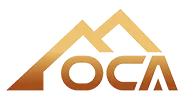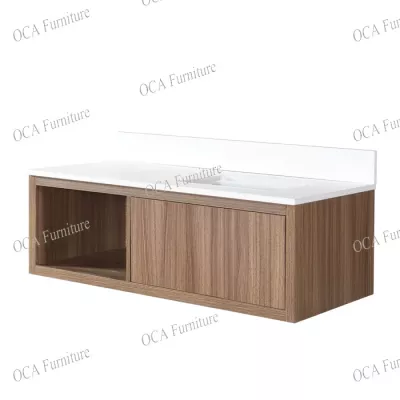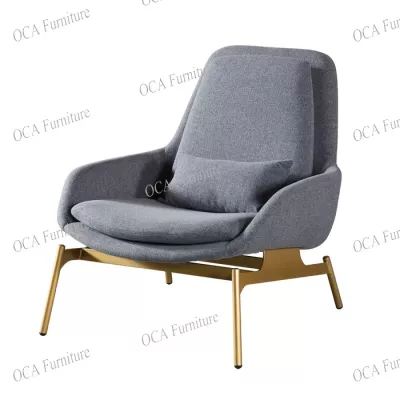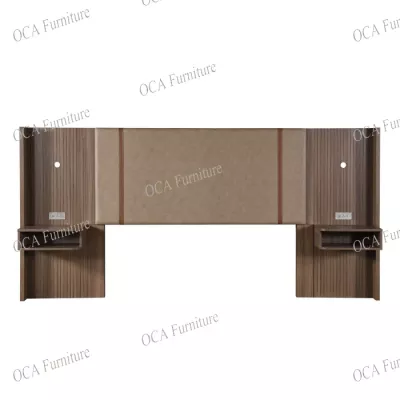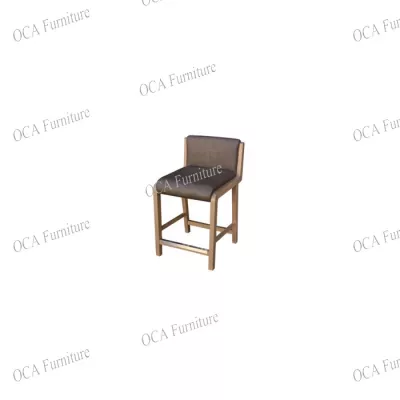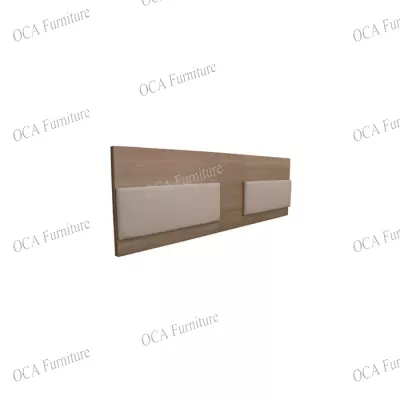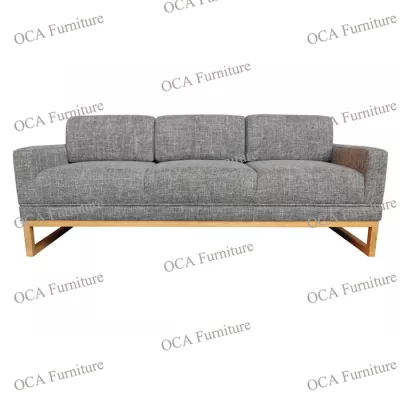Regarding the environmental protection grades and standards of boards, various companies have different opinions. Here we will sort out a more comprehensive environmental protection grades and relevant standards for boards for your reference.

1. It is the E level that is more common in the market, which is divided into three levels of E0 E1 E2. According to European environmental protection standards, wood products are classified into the above three grades according to the formaldehyde release content. Since this set of standards was developed earlier, during the implementation period, E1 certified boards can be used for interior decoration. Let ’s compare the relevant data:
E0 level (formaldehyde release ≤0.5mg / L)
E1 level (0.5mg-1.5mg / L of formaldehyde release)
E2 level (formaldehyde release is greater than 1.5mg / L)
During the implementation of this standard, E0 was the highest environmental protection level at that time. However, with the injection of science and technology, E0 sheet can no longer meet the needs of modern humans, because it only represents a small amount of formaldehyde released, not completely without harm. E1 is a board that is allowed to be used indoors. It has a pungent smell, but it is not strong. Long-term residence can also lead to decreased resistance. E2 level will have a strong odor, and long-term residence will induce many diseases, including leukemia, which is not suitable for human living, especially children, pregnant women and other people.
In the Chinese market, E1 and E0 sheet materials are ubiquitous. At that time, China introduced this set of environmental protection standards in order to align with foreign countries. Derivatives, below, we will report to you one after another.
In accordance with China's national conditions, the vast majority of products in the market are E1 grade plates, which are far from meeting people's pursuit of health. As mentioned above, E1 grades are environmental protection grades allowed by the country for indoor use. Therefore, many dealers are also guiding consumers to make purchases, which has led to many consumers being blinded. Moreover, for E1 grade boards, most brands are just certified. In the production process, due to outdated technology, many of the spot check products did not meet the standards at all, far exceeding the standards of E1 and even E2, which is also Many reports of indoor health injuries caused by indoor pollution are common. The E0 grade sheet is gradually presented to consumers due to the guidance of the consumer market and is promoted as the highest environmental protection level, because many consumers are not people in the industry, and for the field of home improvement, the sheet is only one of them. A small area. So most people can't tell whether it is a good sheet or not. The E0 level is an improvement over the E1 level. It is worth noting that the compliance of the board does not equal the compliance of the indoor air quality. There is a problem with the loading rate of the board. Just as one person in the room smokes with ten or one hundred people, the relative The E0 level is more environmentally friendly than the E1 formaldehyde emission standard.
2. Let's talk about the F-star certification from Japan. The F star certification is a series of Japan's JAS certification on the wood product industry. It is divided into four levels. Compared with European E-level certification, it is an improvement. The fundamental core is the formaldehyde emission, but it is higher than the E-level standard. Relatively improve. Let's take a look at the four levels of the F star standard
F ★ (≤5.0mg / L) The formaldehyde emission is less than or equal to 5mg per L
F ★★ (≤1.5mg / L) The amount of formaldehyde release is less than or equal to 1.5mg per L
F ★★★ (≤0.5mg / L) 0.5mg / L of formaldehyde release
F ★★★★ (≤0.3mg / L) The formaldehyde release amount is less than or equal to 0.3mg per L
Japan ’s JAS star has strict inspection requirements. The inspection area of the product to be inspected is not less than 0.18 square meters, and the edge detection of the board is not allowed. The purpose is to ensure that the most authentic formaldehyde release is detected. The F star certification is more stringent and harsher than the E level testing standards. The formaldehyde emission detected by it is also more real and reliable. It is a higher certification level than the E0 standard. From the data comparison, it is not difficult to see that the formaldehyde emission of F ★★★ is equivalent to 0.5mg / L or less of E0-certified sheet and the highest standard of F star F ★★★★. It is equal to 0.3mg / L. Coupled with the strict testing requirements of JAS, it is not difficult to see that the F star standard is more environmentally friendly.
Because the F-star standard originates from Japan, in Japan, the F-series certification is completely protected by law, unlike the E-class standard currently used in China. The sale of products that affix the JAS mark or abuse the JAS mark without authorization is subject to corresponding criminal penalties and fines. Therefore, due to the rigor of Japanese industry, F-star certified products can better meet consumer needs. No matter from the product quality and environmental protection level, it must be more convincing than the E-class series.
3. We all know that in the first two levels, the environmental protection standards are controlled by the amount of formaldehyde release. The existence of formaldehyde mainly comes from two aspects. One is the raw material itself. Wood contains a trace amount of natural formaldehyde components, but it is minimal and has no effect on the human body. The air we breathe, the beer we drink, etc. There is a certain amount of formaldehyde, and the formaldehyde of the wood itself is completely negligible. On the one hand, it comes from the glue used in the board manufacturing process. Whether the wheelless cutting of the veneer or the laminated material requires glue for splicing and bonding, so as to achieve the rigidity of the plate. And 99% of the boards appearing on the market are the production of urea-formaldehyde glue containing formaldehyde. Therefore, to control the amount of formaldehyde release, glue is the key. A finished plate will also have many hidden links, which will also affect the formation of formaldehyde. For example, if putty and decorative concealing agents contain formaldehyde, it will also affect the overall formaldehyde release of the plate.
In 2008, the California Administrative Act Office approved the California Air Resources Board (CARB) to issue air pollution control measures (ATCM) for toxic substances in formaldehyde emissions from wood products such as boards. This regulation was originally implemented only in California and has now been extended to the United States. Locally, this regulation is the world's most stringent standard for formaldehyde emissions from composite wood products, and requires factories to strictly follow the quality management system required by the regulations to monitor the factory's production process; since January 1, 2009, it has not passed CARB Neither certified composite wood products nor finished wood products containing composite wood products can enter the US market. The California Air Resources Board (hereinafter referred to as CARB) for wood composite products is divided into three levels, namely P1, P2, and the highest level NAF, NAF is also called formaldehyde-free exemption certification.
P1, P2, strictly speaking, can not be said to be two environmental protection levels, because the control of formaldehyde emission is the same, it should be said that there are two stages. The main difference is that the P2 stage must not only meet the requirements of the P1 stage, but also establish a quality management system and quality control laboratory. The third-party supervision of sheet metal production enterprises must meet the P1 stage and formaldehyde release requirements. Phase P1 (Phase1) has been implemented since January 1, 2009. It is required to use the climatic box method ASTM E 1333 or ASTM D 6007 to test the formaldehyde emission of sheet materials. The fixed measurement method is not expanded here. It is stipulated that the hard plywood (HWPW, also referred to as the multilayer board) must be less than 0.08ppm, the particleboard (PB) must be less than 0.18ppm, and the medium density fiberboard (MDF) must be less than 0.21 ppm. Among them, PPM is a unit of formaldehyde release, which is equivalent to E-class and F-star mg / L. Through conversion, we have concluded that CARB-P1's standard for formaldehyde release depends on the formaldehyde release and the material of the board, and The difference in production technology is higher than E0 level environmental protection, and some texture plates are higher than F four-star certification. At the P2 stage, not only is the company required to be able to meet the P1 formaldehyde emission standard, it also stipulates that the formaldehyde emission of the board must meet the requirements of the P1 standard; third-party certification must be enforced (factories should establish quality management systems and quality control laboratories as required) ; Qualified labels must be affixed to the product.
From the above, we can see that in addition to the requirements for product testing to be qualified, this regulation also requires that factories must establish quality control laboratories and quality management systems in strict accordance with the regulations to monitor their own products and ensure that every batch of boards produced by the factory is Is a qualified product. This is the biggest difference between CARB regulations and other regulations, and it is also more difficult to obtain CARB certification.
In response to the release of formaldehyde, CARB has derived one of the world's highest levels of environmental certification standards for plates: CARB-NAF, yes, NAF level, that is, no formaldehyde added level. NAF is the abbreviation of English: No-added-for-aldehyde-based-resin. Its main purpose is to require the board to not add any formaldehyde-containing ingredients such as adhesives, concealers, putties and other substances in any part of the production process. For each link, individual certification is required and the requirements are demanding. It is currently the most difficult certification standard in the world. NAF is the strictest formaldehyde-free exemption certification under the CARB Act. When the board or furniture products obtained this certification are exported to the US market, no formaldehyde testing is required. In China, Yimeikang Wood is the first board manufacturer to pass NAF exemption certification outside the United States. The NAF certification level is also gradually recognized by consumers in China. The most significant feature of NAF-grade boards is that the formaldehyde emission is less than or equal to solid wood! After many tests, the result of formaldehyde test was not detected. Is a true formaldehyde-free release sheet.
OCA hotel furniture factory are specializing in hotel furniture for high end hotels and have done many projects such as: Delta by Marriott, Hampton Inn by Hilton, Double Tree by Hilton, Sheraton By Marriott, Holiday Inn by IHG etc ... 90% for US. So all the boards used by our company are in compliance with CARB certification of the United States (CARB).
